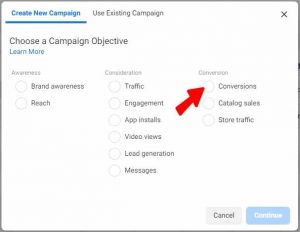Managing creative projects well comes down to understanding the ever-present project management triangle: scope, schedule, and cost.
For projects in many other industries, determining these factors is relatively straightforward: If I’m building a three-bedroom house, I’ll have blueprints and dimensions (scope), which will tell me the amount of cement, wood, windows, flooring, roofing, and everything else I’ll need. Based on the available employee resources, I’ll know how long each phase of the project will take (schedule) and be able to calculate the total cost (obviously, cost). Now, that’s not to say that nothing will go awry or require flexibility and adequate change management, but the overall planning is pretty simple.
Creative projects are not so simple. Answering the questions of cost and time for a company rebranding, for example, is much trickier due to the somewhat ethereal nature of these questions.
I can tell you exactly how long it will take me to pour a house’s concrete foundation if I know the dimensions, equipment, and number of laborers—but how long will it take to draft a logo that embodies the identity our brand is striving to establish and that our entire board of directors will like? Only the marketing genies could tell you.
Here are a few things you need to do in order to effectively manage creative projects:
1. Create a work breakdown structure.
Any project manager will tell you that an accurate and detailed scope definition is the most important part of any project. There is no such thing as a scope document with too much detail. But no matter how much the scope handed to you has been defined, the first step you take should be to create a work breakdown structure (WBS).
A WBS is basically a list of activities that need to be done in order to complete the scope of the project. Like the scope document, the WBS should be as detailed as possible. A detailed WBS is especially crucial if you’re handed an undefined project scope.
For example, if the project is to rebrand a company: What needs to be included in the WBS of such a vaguely defined project goal?
Begin by breaking down what a company rebranding will entail: updating brand color palette, new logo, new messaging, new identity guides, updating website, social media, marketing materials, and campaigns—the list goes on.
Break those high-level tasks down even further into what will be needed to complete each of them. To create a new brand logo, you’d need to do things like market research, creative design, internal stakeholder review, market testing, and final selection. Now, break each of those steps down further into what each one will take to complete, until you have a detailed list of tasks and milestones that will need to be accomplished in order to meet the project’s scope.
A detailed and accurate WBS is the most important thing you can have for creating accurate schedules, budgets, and determining when project scope will be met. Once your WBS is complete, share it with the project team and stakeholders, get their input and buy-in. This will be crucial when the time comes to evaluate the completion and success of the project.
2. Divide the project into phases.
You just built a giant list of tasks that need to be accomplished to complete the project. What do you do with this unwieldy monstrosity? The best thing you can do is divide the project (group the tasks) into unique phases, each with its own deliverables and milestones.
Phases are often segmented in sequential order—this is called the Waterfall Model of project management. In this model, you must complete Phase 1 before going on to Phase 2, and so on. However, for creative projects, this linear order isn’t often required. Depending on resources, you may be able to complete multiple phases simultaneously. This is called the Agile methodology of project management. “Agile” has been a fun buzzword around project management for the last decade or so, and there are many variations, but they mostly boil down to dividing your project into small, bite-sized chunks where you can have multiple people working simultaneously and completing deliverables in short periods of time.
3. Schedule the project.
This is often where the management of creative projects sharply divides from the management of other, more tangible projects. However, as with other projects, your number one friend is historical data.
Remember the last time you had to design a 30-page website? How long did it take you? Now, you have a new project to create the visual design for another 30-page website, and you can use the time from that previous project to make your estimate for this one. After you’ve done two projects, average the time it took to do each of them. Now you have an even more accurate estimate for your third project.
“OK, Ian,” you say. “That all works great if I’ve done this type of project before, but what if I haven’t? What should I do then?”
Now’s the time for the tool that’s been handed down from project manager to project manager for generations: the best guess. Pick a date. Be reasonable, but choose a deadline and hold your personnel to it. There’s an old project management saying that “a task takes as long as the time you set for it.” People have a remarkable ability to rise to the challenges set for them. The best thing you can do is trust the people you’re working with (or if you’re on this solo, trust your own experience). You’ve hired professional designers, copywriters, developers, videographers, editors, and other creative talents for a reason—they know what they’re doing.
4. Manage change.
Ahh, scope creep, the bane of every project manager’s existence. No matter how well-defined your scope document or how detailed your WBS, there are just too many unknowns at the beginning of the project. Whether it’s a change in resources, tool or material costs, or a key stakeholder who just changes their mind, there will be a need to alter your initial plan during your project. This is where change management comes in.
Change management refers to the tools you put in place at the beginning of a project that allow you to incorporate changes to the project’s scope during the project. These often include things like change orders and OOS (out of scope) agreements. Guarding against unauthorized changes to scope is one of the project manager’s key responsibilities.
These changes can come internally or externally. A team member might misunderstand their deliverable, eating up valuable time and budget. A client may ask to add something to the project without understanding the nature of their request. At these times, it’s important that everyone—team members, clients, and stakeholders—fully understands the project’s scope, and what their desired changes entail, whether it’s an increase in cost, schedule adjustments, or a change in responsibility for the deliverable.
Make sure you document everything. A supervisor once told me, “Verbal agreements didn’t happen.” If you come to a verbal agreement over a scope change, write it down and get the stakeholder to physically sign off on what was agreed. This protects everyone involved: It protects you from the client claiming you promised more than you did, and it protects the client by ensuring what they asked for is delivered.
5. Keep data, analyze, and refine.
The truth is, whatever the industry, no two projects are the same. Each will come with unique challenges, personalities, roadblocks, changes, and general chaos. However, by recording and collecting accurate data, you can mitigate a lot of these problems and create much more accurate cost and schedule estimates.
Keep time logs of how long each task on the WBS took, what resources were needed, and how close they were to the original estimates. Were there any that took much longer than expected? Much shorter? Why did these aberrations occur? Was it a bad estimate, freak accident, poor scope, or something else? What could have been done differently to shorten the timeline, reduce costs, or deliver a better product?
Now, use that data and analysis in planning your next project. Rinse and repeat. Over time, your estimates will become more and more accurate, and your projects will run smoother and smoother.
There are many aspects of project management. Countless books, college programs and courses, thousands of professional studies, journals, and research articles have been dedicated to the craft. But they all boil down to a few key tenets: create an accurate scope and WBS, schedule your resources using the best available data, develop change management procedures, and collect and analyze data for improvement. If you can implement these few simple principles with your creative projects, you’ll greatly enhance your efficiency and create much more accurate budgets and schedules.
Business & Finance Articles on Business 2 Community
(52)





